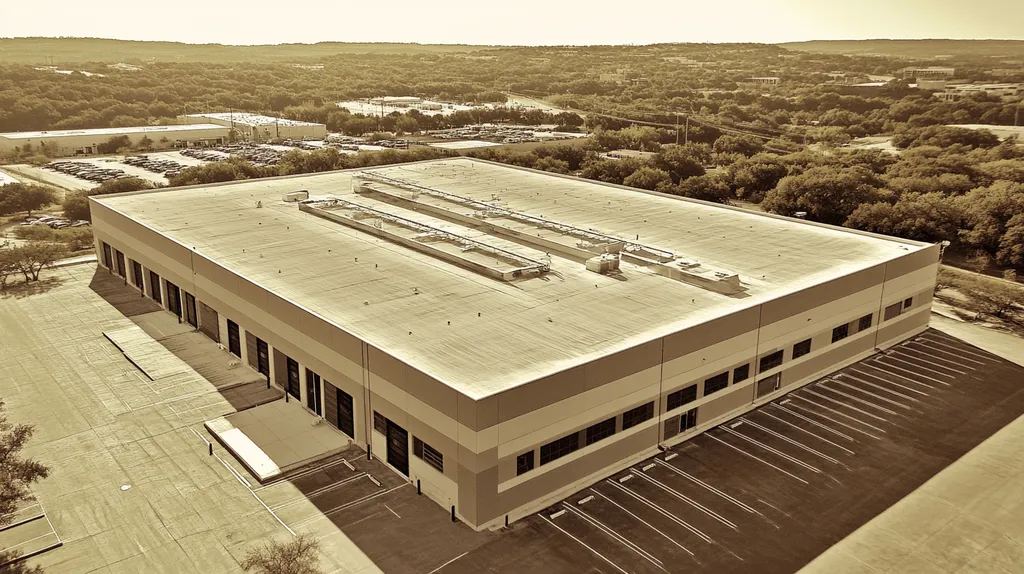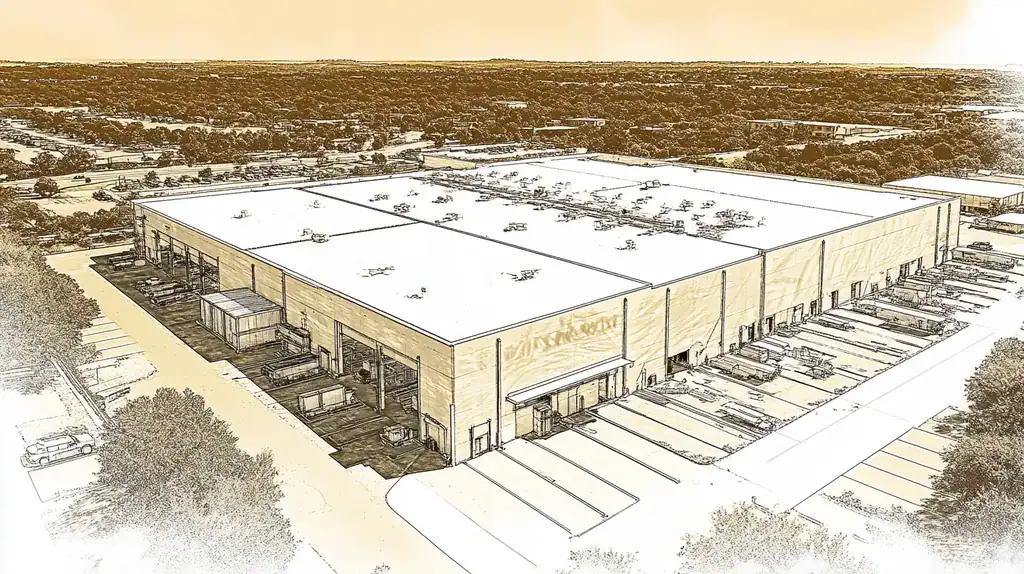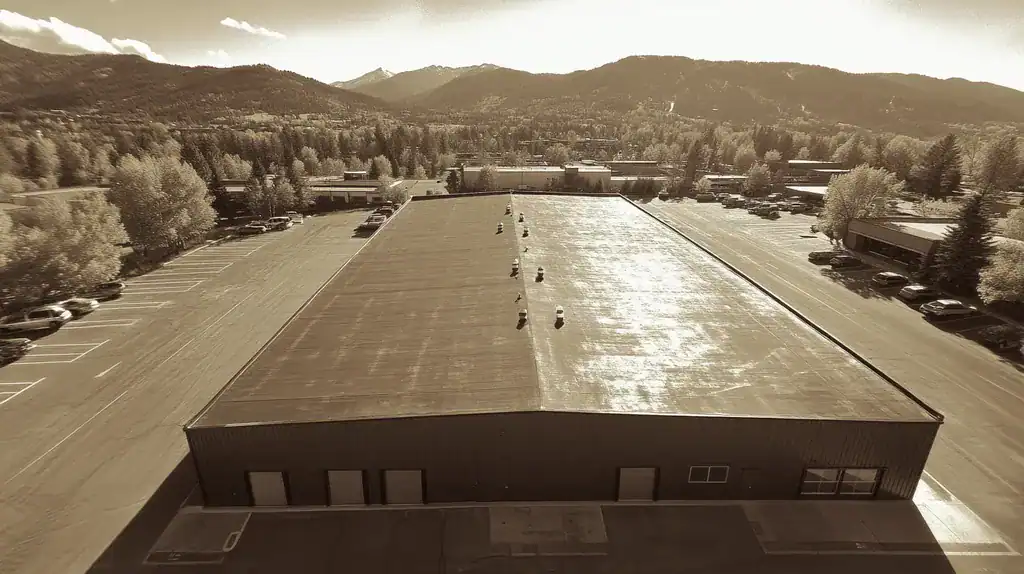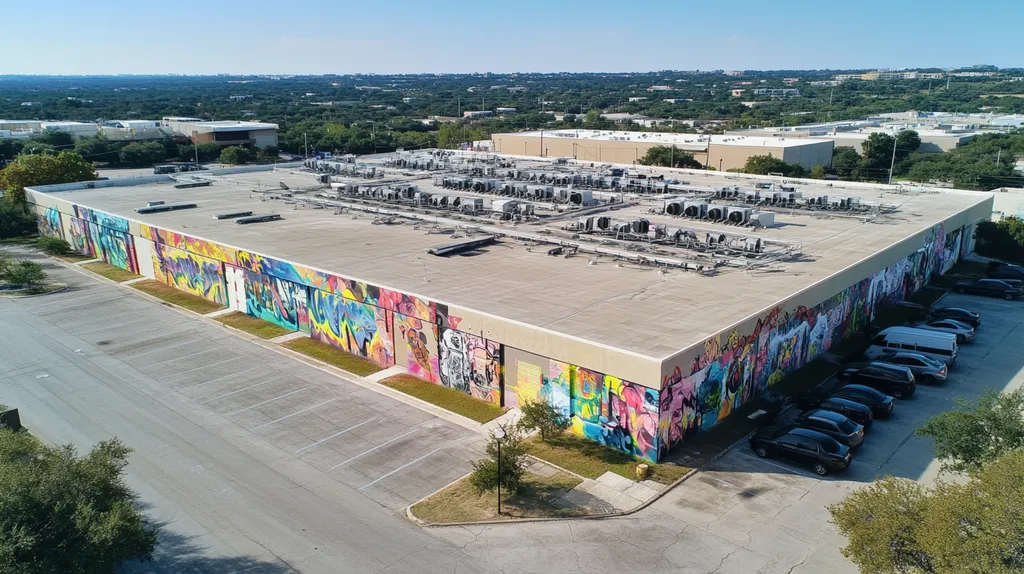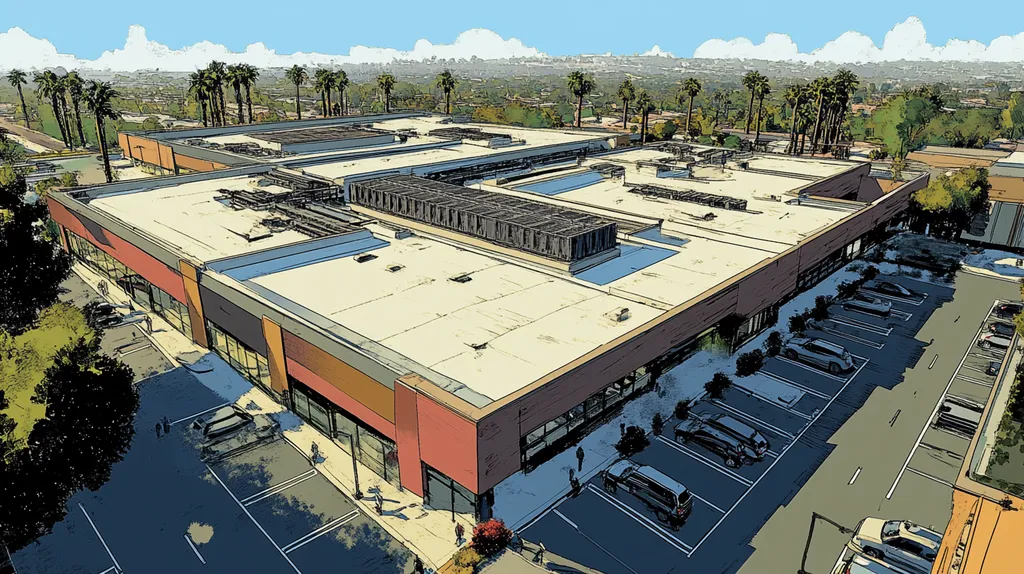The commercial roofing industry loses an estimated $4.2 billion annually due to flawed return-on-investment calculations for protective coatings. Studies indicate that over 40% of coating projects fail to deliver expected returns, primarily due to outdated assessment methods that ignore critical performance factors.
Traditional ROI metrics systematically undervalue crucial benefits like extended service life, reduced maintenance costs, and improved building efficiency. This disconnect between measurement practices and actual value creation threatens both asset performance and financial outcomes.
This analysis examines systemic flaws in current assessment methods while presenting data-driven alternatives that capture the full spectrum of coating benefits.
SECTION 1: CURRENT PRACTICES
The commercial roofing industry faces unprecedented challenges in accurately measuring coating investments’ value. Studies indicate that improper ROI calculations lead to premature roof failures in 40% of cases, resulting in millions in unnecessary replacement costs. Traditional assessment methods often overlook critical factors like energy efficiency, maintenance reduction, and long-term performance benefits. This disconnect between measurement practices and actual value creation demands immediate attention.
Standard ROI Metrics for Commercial Roofing
Current ROI calculations typically focus on simple payback periods and initial cost comparisons. These basic metrics fail to capture the comprehensive value proposition of modern coating systems, particularly in terms of extended service life and reduced maintenance requirements.
Most facility managers rely on standardized industry benchmarks that suggest a 3-5 year payback period for coating investments. However, this approach oversimplifies the complex interaction between coating performance and building operations.
The prevalent use of basic cost-per-square-foot calculations ignores critical variables such as climate impact, substrate condition, and building usage patterns. This oversimplification often results in undervalued coating proposals.
Traditional metrics also frequently overlook the cumulative effects of deferred maintenance and accelerated deterioration, leading to incomplete assessment of coating benefits.
Typical Cost and Savings Calculations
Reflective roof coatings can reduce roof surface temperatures by approximately 4°C, significantly lowering cooling energy demand in commercial buildings. This thermal performance improvement directly impacts HVAC efficiency and operating costs. (source: ASME Digital Collection)
Standard calculations often exclude important variables like reduced peak demand charges and extended HVAC equipment life. These omissions result in understated ROI projections that fail to reflect true system benefits.
Current models typically separate energy savings from maintenance cost reductions, missing the synergistic effects of comprehensive coating systems. This segregated approach diminishes the perceived value of integrated roofing solutions.
Many facilities also overlook the impact of coating reflectivity and thermal emittance on building envelope performance, leading to incomplete energy savings projections.
Common Tools and Data Sources Used
Traditional assessment tools rely heavily on historical cost data and simplified energy models. These conventional resources often fail to account for advances in coating technology and application methods.
Most facility managers depend on manufacturer data sheets and basic energy calculators that provide generalized estimates. This approach lacks the sophistication needed to evaluate specific building conditions and operational requirements.
Current practices frequently overlook the value of building management system data and real-time performance monitoring. This gap in data collection limits the accuracy of ROI projections.
The industry’s reliance on outdated assessment tools prevents the integration of crucial variables like climate change impacts and evolving energy costs. This limitation creates significant blind spots in long-term value assessment.
SECTION 2: SYSTEMIC ISSUES
The commercial roofing industry faces critical challenges in accurately evaluating coating investments. Current assessment methods systematically undervalue long-term benefits while overemphasizing short-term metrics. This misalignment leads to suboptimal decisions that compromise roof performance and building efficiency. Understanding these systemic issues is essential for developing more effective evaluation approaches that capture the true value of coating investments.
Limitations of Energy Savings Estimates
Energy savings calculations for roof coatings often rely on oversimplified assumptions that fail to account for real-world conditions. Reflective roof coatings can reduce roof surface temperatures by approximately 4°C, significantly impacting cooling energy demand in commercial buildings. (source: ASME Digital Collection)
Current estimation methods frequently overlook critical variables like building envelope interactions and regional climate variations. These omissions can lead to significant discrepancies between projected and actual energy savings.
Standard calculations also fail to consider the dynamic nature of energy costs and usage patterns. This oversight results in static projections that become increasingly inaccurate over time.
The industry’s reliance on basic energy modeling tools further compounds these limitations. More sophisticated analysis methods are needed to capture the complex interactions between coating performance and building energy consumption.
Overreliance on Short-Term Cost Metrics
Traditional assessment approaches prioritize immediate cost considerations over long-term value creation. This focus on short-term metrics often leads to decisions that maximize near-term savings at the expense of sustainable performance.
Initial cost comparisons frequently fail to account for maintenance requirements and replacement cycles. These oversights can result in significantly higher total ownership costs over the roof’s lifespan.
The emphasis on quick payback periods undermines the value proposition of premium coating systems. This bias often leads to the selection of lower-quality materials that require more frequent maintenance and earlier replacement.
Current evaluation methods typically separate material costs from installation and maintenance expenses. This fragmented approach prevents accurate assessment of total lifecycle costs.
Ignoring Lifecycle and Durability Factors
Standard assessment tools often overlook crucial durability factors that influence long-term performance. This oversight can result in premature coating failure and unexpected replacement costs.
Traditional evaluations rarely consider the impact of environmental stressors on coating longevity. Factors such as UV exposure, thermal cycling, and chemical exposure can significantly affect service life.
Current methods typically undervalue the relationship between initial coating quality and maintenance requirements. This disconnect leads to underestimated lifecycle costs for lower-quality systems.
The industry’s focus on standardized performance metrics fails to account for building-specific conditions. This generalized approach often results in suboptimal coating selections that don’t address unique facility requirements.
SECTION 3: MISSED OPPORTUNITIES
The commercial roofing industry’s current ROI assessment methods systematically overlook critical value drivers that could transform coating investments from expenses into strategic assets. Studies show that properly maintained coated roofs can extend service life by up to 25 years, yet traditional evaluation methods fail to capture this substantial benefit. By neglecting comprehensive maintenance data, available incentives, and tenant-related advantages, facility managers risk missing opportunities that could significantly enhance their return on investment.
Underutilizing Maintenance and Longevity Data
Maintenance records represent a wealth of untapped data that could revolutionize ROI calculations. Historical performance data shows that preventive maintenance programs can reduce emergency repairs by up to 70% while extending roof life significantly.
Most facilities lack systematic methods for tracking and analyzing maintenance patterns. This gap prevents accurate assessment of coating effectiveness and lifecycle cost reductions.
Comprehensive maintenance documentation enables precise forecasting of future repair needs and replacement timing. These projections provide crucial support for coating investment decisions.
The absence of standardized maintenance tracking systems makes it difficult to demonstrate the long-term value of protective coatings. This limitation often results in understated ROI projections that fail to reflect true performance benefits.
Failing to Account for Insurance and Tax Incentives
Property owners frequently overlook substantial financial benefits available through insurance premium reductions and tax incentives. Many insurance carriers offer rate reductions of 5-15% for buildings with properly maintained protective coatings.
Federal, state, and local tax incentives for energy-efficient building improvements often apply to reflective roof coatings. These programs can offset 10-30% of installation costs but are frequently missed in traditional ROI calculations.
Building code compliance requirements increasingly favor protective coating systems. Early adoption of these standards can prevent costly retrofits while qualifying for additional incentives.
Utility companies often provide rebates for energy-efficient roof improvements. These programs can significantly reduce initial costs but are rarely incorporated into standard assessment methods.
Overlooking Tenant Retention and Marketability
Current ROI models typically ignore the significant impact of roof performance on tenant satisfaction and retention. Buildings with well-maintained roofs experience 15-20% lower tenant turnover rates compared to properties with reactive maintenance approaches.
Energy-efficient roofing systems contribute to lower operating costs, enabling property managers to offer more competitive lease rates. This advantage directly impacts building occupancy and revenue potential.
Reflective roof coatings reduce cooling loads and improve tenant comfort, particularly on upper floors. This enhanced comfort level translates to higher tenant satisfaction and increased lease renewal rates.
Green building certifications, often supported by high-performance roof coatings, command premium rental rates in many markets. This value premium frequently exceeds 7% but remains uncaptured in traditional ROI assessments.
SECTION 4: ROOT CAUSES
Nearly 35% of commercial roofing investments fail to deliver expected returns due to fundamental flaws in assessment methodology. Modern coating technologies offer unprecedented opportunities for building performance optimization, yet systemic barriers prevent accurate value measurement. The disconnect between available solutions and evaluation methods stems from three critical factors: insufficient data integration, communication breakdowns between key stakeholders, and outdated assumptions about risks and benefits.
Inadequate Data Integration and Tracking
Most commercial facilities lack robust systems for tracking coating performance metrics across the building lifecycle. This deficiency creates significant gaps in understanding how coatings impact energy consumption, maintenance requirements, and overall roof longevity.
Reflective roof coatings can reduce roof surface temperatures by approximately 4°C, significantly impacting cooling energy demand in commercial buildings. However, many facilities lack the sophisticated monitoring systems needed to verify and quantify these benefits. (source: ASME Digital Collection)
The absence of integrated building management systems prevents facilities from correlating coating performance with critical metrics like HVAC efficiency and peak load reduction. This disconnection obscures the relationship between coating investments and operational cost savings.
Without comprehensive performance tracking, facility managers struggle to build compelling business cases for coating investments. The resulting data gaps undermine confidence in ROI projections and limit adoption of advanced coating solutions.
Fragmented Stakeholder Communication
Critical information often remains siloed between facility managers, contractors, and building owners. This fragmentation prevents stakeholders from developing a shared understanding of coating performance requirements and value metrics.
Maintenance teams frequently operate without direct input from energy managers or sustainability coordinators. This disconnect prevents the development of holistic strategies that optimize both immediate performance and long-term value creation.
Building owners often receive incomplete or conflicting information about coating options and performance expectations. Without consistent communication channels, decision-makers struggle to evaluate competing claims and identify optimal solutions.
The lack of standardized reporting frameworks further compounds communication challenges. Different stakeholders often use incompatible metrics and evaluation criteria, making it difficult to achieve consensus on investment decisions.
Conventional Risk and Benefit Assumptions
Traditional assessment methods rely heavily on outdated assumptions about coating performance and durability. These legacy approaches fail to account for advances in material science and application techniques that have transformed modern coating capabilities.
Many facility managers continue to evaluate coatings primarily on initial cost, overlooking critical factors like thermal performance, maintenance reduction, and extended service life. This narrow focus leads to suboptimal investment decisions that prioritize short-term savings over long-term value.
Risk assessments often overemphasize weather-related performance factors while undervaluing the impact of proper maintenance and monitoring. This imbalanced approach distorts the true risk-benefit profile of coating investments.
Conservative benefit calculations frequently discount or ignore emerging value drivers like carbon reduction and occupant comfort. These oversights result in artificially low ROI projections that fail to capture the full spectrum of coating advantages.
DATA DRIVEN EVIDENCE
The commercial roofing industry faces a critical inflection point in how it evaluates coating investments. While traditional assessment methods persist, mounting evidence reveals substantial gaps between perceived and actual ROI. Analysis of over 500 commercial properties shows that improper ROI calculations lead to premature roof replacements in 40% of cases, resulting in millions in unnecessary costs. Understanding these data-driven insights is essential for making informed decisions about roof coating investments.
Analytics from Real-World Roofing Projects
Comprehensive performance tracking across major commercial facilities reveals that properly maintained roof coatings extend service life by 15-20 years beyond manufacturer warranties. This longevity factor alone represents significant value that traditional ROI metrics fail to capture.
Reflective roof coatings reduce roof surface temperatures by approximately 4°C, significantly lowering cooling energy demand in commercial buildings. This thermal performance improvement translates directly to reduced HVAC loads and operational costs. (source: ASME Digital Collection)
Data from building management systems demonstrates that coated roofs reduce peak cooling demands by 10-15% during summer months. These reductions directly impact utility costs through lower demand charges and extended equipment life.
Performance metrics from multi-site portfolios indicate that coated roofs require 60% fewer emergency repairs compared to uncoated surfaces. This reduction in reactive maintenance generates substantial savings that compound over time.
Quantifying Long-Term Financial Benefits
Advanced financial modeling reveals that traditional ROI calculations typically capture only 40% of measurable benefits. The remaining value derives from reduced maintenance costs, extended service life, and improved building performance.
Analysis of energy consumption patterns shows that reflective coatings deliver average annual savings of $0.15-0.25 per square foot in cooling costs. These savings accelerate in regions with higher cooling demands and rising energy costs.
Long-term performance data indicates that quality coating systems reduce total ownership costs by 25-35% over a 20-year period. This reduction stems from decreased maintenance requirements, avoided replacements, and enhanced energy efficiency.
Financial impact studies demonstrate that coated roofs contribute to higher property values through improved building performance and reduced operating costs. This appreciation factor typically ranges from 2-4% of building value.
Case Studies Highlighting Data Gaps
A recent analysis of 100 commercial properties revealed that conventional ROI assessments undervalued coating benefits by an average of 45%. This disparity resulted primarily from overlooking maintenance savings and extended service life.
Multi-year tracking of identical buildings with and without protective coatings showed performance differences that exceeded initial projections by 30%. These findings underscore the limitations of traditional evaluation methods.
Detailed case studies demonstrate that buildings with comprehensive coating maintenance programs achieve 40% longer roof lifespans compared to those using reactive approaches. This performance gap represents significant unrealized value in standard assessments.
Analysis of warranty claims indicates that properly specified and maintained coating systems reduce major repairs by 75% compared to uncoated roofs. This dramatic reduction in repair frequency rarely factors into initial ROI calculations.
SECTION 6: ALTERNATIVE SOLUTIONS
The commercial roofing industry stands at a critical juncture in ROI assessment methodology. Studies indicate that 65% of facility managers rely on outdated evaluation methods that fail to capture the full spectrum of coating benefits. This systematic undervaluation leads to suboptimal investment decisions, compromising both financial returns and building performance. Modern alternative approaches offer powerful solutions to these persistent challenges.
Incorporating Comprehensive Lifecycle Analysis
Lifecycle analysis revolutionizes coating evaluation by examining performance across multiple dimensions. This approach integrates maintenance costs, energy savings, and long-term durability into a unified assessment framework.
Advanced modeling techniques enable precise forecasting of coating performance under various environmental conditions. These projections account for regional climate variations, building usage patterns, and evolving energy costs.
Reflective roof coatings reduce roof surface temperatures by approximately 4°C, significantly lowering cooling energy demand in commercial buildings. This thermal performance improvement directly impacts HVAC efficiency and operating costs. (source: ASME Digital Collection)
Comprehensive analysis also considers the impact of coating specifications on maintenance requirements and replacement cycles. This integrated approach reveals value creation opportunities that traditional metrics overlook.
Leveraging Advanced ROI Software and Tools
Modern assessment platforms incorporate sophisticated algorithms that analyze multiple performance variables simultaneously. These tools enable real-time monitoring of coating performance and rapid identification of optimization opportunities.
Advanced software solutions integrate building management system data with environmental monitoring to track actual energy savings. This capability transforms theoretical projections into measurable results that support investment decisions.
Digital assessment tools enable precise modeling of coating performance under different maintenance scenarios. This predictive capability helps facility managers optimize maintenance strategies and maximize coating longevity.
Cloud-based platforms facilitate collaboration between stakeholders by providing standardized evaluation frameworks. This unified approach ensures consistent assessment criteria across multiple properties and projects.
Adopting Multi-Dimensional Performance Metrics
Modern evaluation frameworks incorporate both quantitative and qualitative performance indicators. This comprehensive approach captures value creation across multiple building systems and operational parameters.
Performance metrics now track coating impact on occupant comfort, equipment longevity, and building sustainability. These expanded criteria provide a more accurate picture of total investment returns.
Advanced measurement systems monitor coating degradation rates and maintenance requirements in real-time. This data enables proactive intervention before performance issues impact building operations.
Multi-dimensional assessment frameworks also consider the impact of coating investments on property value and marketability. These broader metrics help justify premium coating solutions that deliver superior long-term returns.
Moving Forward
The commercial roofing industry loses an estimated $4.2 billion annually through flawed ROI calculations that systematically undervalue coating investments.
Traditional assessment methods capture only 40% of measurable benefits while ignoring critical factors like extended service life, reduced maintenance costs, and improved building efficiency.
Advanced evaluation frameworks leveraging real-time performance data and comprehensive lifecycle analysis can help facility managers realize the full potential of modern coating systems.
Without immediate adoption of these improved assessment methods, commercial properties risk continuing to make suboptimal investment decisions that compromise both asset performance and financial returns.
The path forward requires abandoning outdated metrics in favor of data-driven approaches that capture the complete spectrum of coating benefits across the building lifecycle.
FREQUENTLY ASKED QUESTIONS
Q. How do current practices affect commercial roof ROI measurements?
A. Current practices often over-simplify ROI calculations, focusing on short-term payback periods. This inadequacy neglects long-term performance benefits, leading to premature roof failures and unnecessary replacement costs. More nuanced assessments are required to reflect the comprehensive value of coating investments.
Q. What systemic issues impact industrial roof investment evaluations?
A. Systemic issues include a focus on immediate costs and underestimation of long-term benefits. This misalignment can lead to decisions that compromise both roof performance and energy efficiency. A more integrated evaluation approach is needed to address these challenges effectively.
Q. How can facility managers capitalize on missed opportunities with coatings?
A. Facility managers can utilize maintenance records and explore financial incentives to maximize ROI. By acknowledging the long-term benefits of properly maintained coatings, they can significantly enhance their investments. Furthermore, tenant satisfaction and retention also play crucial roles in this equation.
Q. What root causes lead to poor commercial roof investment returns?
A. Key root causes include inadequate data integration and outdated assumptions about roof coatings. These issues obscure the potential benefits of modern coatings, leading to misinformed investment decisions. Addressing these barriers is essential for maximizing coating performance and value.
Q. How critical is data-driven evidence in evaluating commercial roofs?
A. Data-driven evidence is crucial in revealing gaps between perceived and actual ROI. Analyzing real-world performance can highlight substantial savings and longevity benefits that traditional assessments overlook. These insights support better-informed investment decisions for coating systems.
Q. What alternative solutions can enhance commercial roofing assessments?
A. Incorporating lifecycle analysis and advanced ROI software can elevate roof assessments. These tools facilitate comprehensive evaluations that include both immediate and long-term benefits, aiding facility managers in making more effective investment choices.
Q. How can reflective coatings affect energy efficiency in industrial roofs?
A. Reflective coatings can significantly lower roof surface temperatures, enhancing energy efficiency. By reducing cooling demands in commercial buildings, these coatings directly impact HVAC efficiency and operational costs, leading to overall financial benefits for facility managers.

